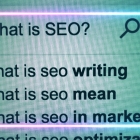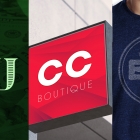5 Ways to Create a Great E-Commerce Product Page
Have you ever been shopping online and encountered a product page that was so stuffed with information and so confusing that you just decided not to buy the product? Or, maybe you decided to go elsewhere to look for it because shopping should be fun for goodness sake!
If you’re going online to buy a pair of hot shoes, for example, you shouldn’t be frustrated in the process. You should come away feeling like you and those shoes are gonna set the world on fire together.
Chances are, your frustration was the result of a poorly designed product page. Maybe the information wasn’t organized in a way that was easy to understand, maybe there was too much or too little information. Maybe the product description didn’t turn you on. Whatever the problem might be, there’s always a way to fix it so that customers have an enjoyable shopping experience.
Today we’re going to talk about some of the strategies we’ve found to be really helpful in creating a customer-focused product page for e-commerce websites.
Often, retailers are very ambitious and they want their brick-and–mortar shopping experience to be recreated on their website. They try to give customers all the product information they can while building a brand persona and creating an easy checkout procedure. In trying to cram so much into their e-commerce product page, retailers may actually be turning people off with a cluttered experience.
The good news, GLAD WORKS friends, is that there are five strategies that we’ve found to be very successful in creating e-commerce product pages:
- Getting to know the shopper
- Carefully planning product details and deciding how to describe them
- Using natural language and personal pronouns in product descriptions
- Employing information hierarchies
- Knowing customers’ context
Getting to know the shopper
When we think about the descriptions and layout of a product page, we focus on the target customer. We do some research and talk to our clients about who their customers are and what they like and need. We check out the client’s social media pages to gather information about what people are saying. All of our research is aimed at creating a list of the customers’ major characteristics to help guide our content writing and organization process.
Plan product details and their descriptions
Once we’ve established a persona to please for each product, we can get on to writing our product descriptions. We decide what we want the customer to learn about the product—it’s features, design, functionality, options, price, etc., and then we think about how to organize that information into a layout that will benefit the customer the most. In the end, the copy is intended not to sell the product, but the benefits of the product. We want the customer to understand how the product will help make their lives better/easier/more fun/more glamorous—whatever.
Use natural language and personal pronouns.
Through the use of personal pronouns like you and your we can engage customers effectively since people are so much more likely to take in a message if they can see themselves in the text. So, let’s say for example that we have a website that sells shoes. When we describe a pair of ah-mazing suede platform pumps, we want to say something like “pair them with your favorite skinny jeans for a night out, or with a pencil skirt for the office. No matter what you choose to wear them with, you’ll exude sass and sex appeal!”
Information hierarchies are our friends
Clearly, a product page needs to include every imaginable detail of a product, but that information needs to be organized in a way that will help the customer make a decision about its benefits. We try to anticipate and provide answers to every question a customer might have about the product. Then, we put all the most important information at the top of the description. Some details that might not be that interesting to a customer can even be put on a different tab. Here’s where understanding the customer’s context becomes crucial.
Understanding customer context
Not every customer visiting an e-commerce site has the same context. For example, if you’re selling shoes online, not everyone is looking for the same kind of shoes, so their context is different. That means that the way we organize the information hierarchy should be different as well.
For example, the weight of a shoe might not be that important to someone buying a pair of five inch pumps, but a person looking at sneakers or hiking boots would care very much about the weight of the shoe, so that information would be organized differently depending on the customer’s priorities.
Even though we do a lot of research initially, we think planning product pages for an e-commerce site according to the customer’s needs and priorities is a great way to make sure that the benefits of a product are easy to see and understand. That will translate into happiness for them and sales for you!

 An agency-eye view of Marketing, Advertising, Branding, Design & Media.
An agency-eye view of Marketing, Advertising, Branding, Design & Media.





Very true that knowing the customer is key. Other helpful features are "sort by" and "include/exclude" buttons. Sometimes a shopper will see a sorting pattern or feature choice that will lead them directly to what they're looking for. Because shoppers have different priorities, they can hone in on what's important to them. Nicely written article.
Thank you Steve! Sorting features are really important, it's true. Sometimes there's just too much information! You've got to cut some of it out to get to the good stuff.